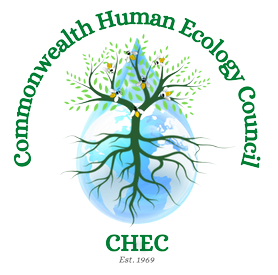The Problem With Ocean Plastic Pollution
Pollution is a problem. Whether it's noise, light, air or water - pollution causes issues for nature and all living ecosystems. In recent years, the scale of one type of pollution in particular has caused outrage globally - ocean plastic pollution. In this short post that coincides with World Ocean Day, we take a look at the problem with ocean plastic pollution.
What is Ocean Plastic Pollution?
Plastic is a synthetic polymer that's made from petroleum. It has many variations and provides a number of functions in human society including packaging, sports equipment, household items, electronic equipment and much, much more. However, it's also incredibly harmful.
Plastic is notoriously hard to properly dispose of and while certain types of plastic can be recycled, much of it cannot. This begs the question as to what to do with plastic once we've used it? Other materials will naturally decompose but plastics can take a long time to decompose as shown below:
The Life of Plastics
The average time it takes different plastic items to decompose. Source:
Therefore, with no place else to go, plastic often ends up in our oceans. Here it becomes what's known as plastic pollution and damages the water and all the marine life that make up our oceans. However, we are still discovering much about the plastic pollution in our oceans.
Where Does Plastic Pollution Go?
For years ocean plastic pollution has been a well documented issue. Plastics and other waste items find their way to the oceans and create huge areas of pollution that are incredibly damaging.
Perhaps the most famous case of this is the Great Pacific Garbage Patch. The garbage patch covers an estimated 1.6 million square kilometers made up of 1.8 trillion pieces of plastic.
Other pieces of plastic end up directly harming animals. Pictures of animals such as turtles and seals being tied up in plastic netting and packaging has been a familiar sight in the 21st Century. Some sea birds confuse plastics for food and are killed after ingesting too much.
An Albatross with plastic inside it's stomach
The unaltered stomach contents of a dead albatross chick photographed on Midway Atoll National Wildlife Refuge in the Pacific in September 2009 include plastic marine debris fed the chick by its parents. Source: Chris Jordan
However, brand new research is also providing further insights into ocean plastic pollution. For example, in a paper titled "Ocean sediments as the global sink for marine micro- and mesoplastics" the authors conclude that the majority of ocean plastic pollution can be found "deposited and/or buried in ocean sediments".
The authors estimate that the median plastic load in global marine sediments is between 25 and 905 Tg demonstrating just how vast this problem is.
What is the Problem With Ocean Plastic Pollution?
Plastic pollution accounts for 80% of all litter in our oceans. It's a problem that can easily be ignored due to how far the ocean is away from most of us. However, yearly storms reveal the true health of our oceans.
One problem with ocean plastic pollution is that is slowly breaks down into microplastics. These tiny particles of plastic are more easily ingested by marine life and can poison entire food chains. Once ingested, plastic gives the impression that the animal is full when in fact, it isn't and it eventually starves to death.
Ocean Plastic Pollution on a Beach
Also, plastic can pierce the internal organs of marine life as it's ingested, often resulting in death. Larger pieces of plastic can entangle marine life showing how multifaceted the problem is.
The plastic problem reaches far and wide. Research has shown that microplastics from European rivers have even contaminated the Arctic! In fact, it's also been found in the depths of the Mariana Trench and in Antarctica.
What Can Be Done About Ocean Plastic Pollution?
There are a number of things we can all do to help fight against ocean plastic pollution. We can take individual action within our community or join groups acting more on a global level. What remains clear is that we need to do something. To tackle the problem with ocean plastic pollution you could:
Join a beach clean up (Find one near you here!)
Support World Ocean Day using the hashtags #WorldOceanDay, #OneOcean
Use a reusable cup/bottle/mug instead of buying a single-use plastic one.
Make sure you understand your local authority's recycling rules and follow them
Go plastic and waste free (Check out this plastic-free guide!)
Support charities and organisations like CHEC who are fighting plastic pollution (Donate here!)



